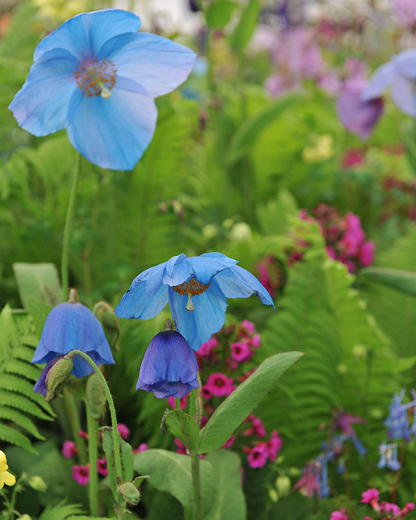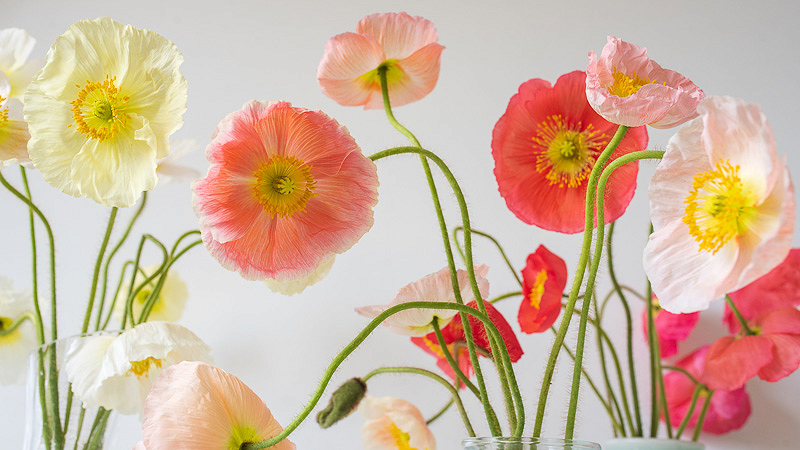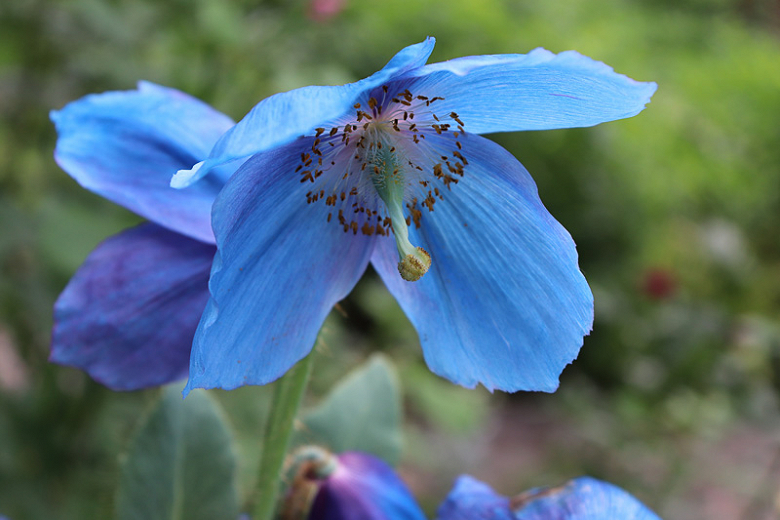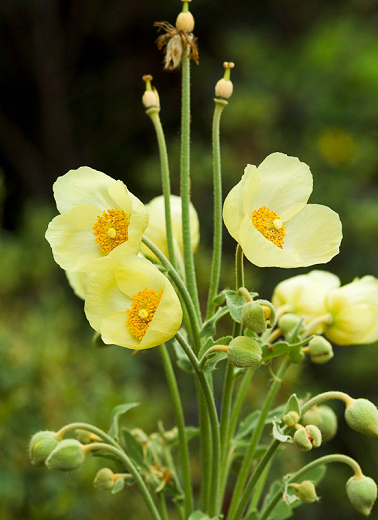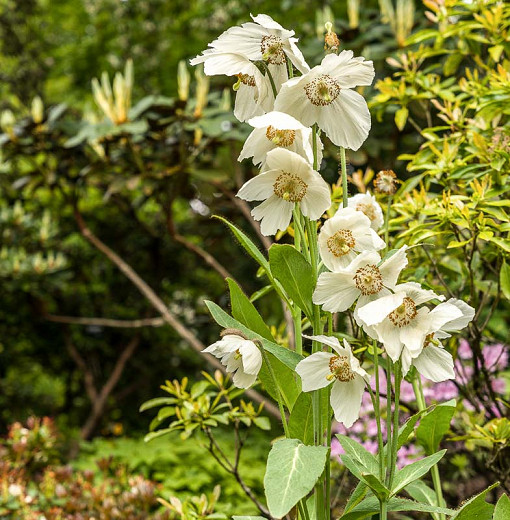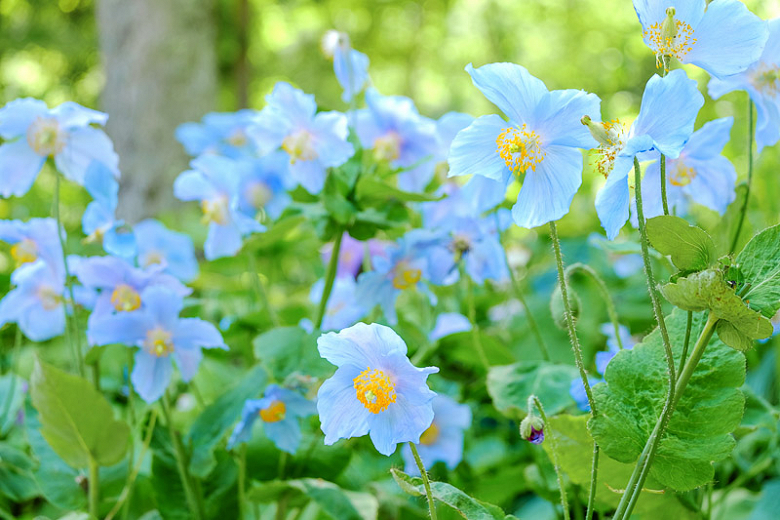Meconopsis Bobby Masterton (Blue Poppy)
Meconopsis ‘Bobby Masterton’ (Blue Poppy) is a short-lived perennial boasting nodding, sky-blue flowers. Their 4 overlapping petals surround a bouquet of contrasting golden stamens and a long, slender style. Blooming in early-mid summer, the splendid blossoms are borne in clusters on erect, leafy stems arising from a rosette of oval leaves suffused with red-purple when young.
Meconopsis 'Bobby Masterton' (Blue Poppy) is a short-lived perennial boasting nodding, sky-blue flowers. Their 4 overlapping petals surround a bouquet of contrasting golden stamens and a long, slender style. Blooming in early-mid summer, the splendid blossoms are borne in clusters on erect, leafy stems arising from a rosette of oval leaves suffused with red-purple when young. The blossoms give way to decorative seed capsules, which contain no viable seed. This well-known, sterile clone is thought to be a hybrid between M. grandis subsp. grandis and M. baileyi. Planted in small groups, the delicate flowers of this blue poppy will give a color punch to your shady borders and draw attention.
- Recipient of the prestigious Award of Garden Merit of the Royal Horticultural Society.
- Grows up to 4-5 ft. tall (90-120 cm) and 18-24 in. wide (45-60 cm). It will slowly spread by offsets in good growing conditions.
- Prefers part shade in humus-rich, neutral to slightly acidic, moist but well-drained soils. Make sure the soil has plenty of organic matter. Do not allow the soil to dry out during the growing season.
- This plant does not respond well to high summer heat and humidity but thrives in areas with cool damp summers. Shelter from cold, dry winds.
- The acidity of the soil will impact the color of your poppies: the more alkaline the soil, the more purple the color will be.
- Apply a balanced fertilizer in spring and mulch round plants with garden compost or well-rotted manure.
- Perfect for beds and borders, cottage gardens, and woodland gardens.
- Deer and rabbit resistant
- Cut down to the base in late fall.
- Propagate by division after flowering but can be short-lived.
- May be affected by slugs and snails or downy mildew
- Meconopsis is native to the Himalayas and surrounding regions.
Requirements
| Hardiness | 5 – 7 |
|---|---|
| Plant Type | Perennials |
| Plant Family | Meconopsis – Himalayan Poppy |
| Exposure | Partial Sun |
| Season of Interest | Summer (Early,Mid) |
| Height | 4' – 5' (120cm – 150cm) |
| Spread | 1' – 2' (30cm – 60cm) |
| Spacing | 18″ – 24″ (45cm – 60cm) |
| Water Needs | Average |
| Maintenance | Average |
| Soil Type | Clay, Loam |
| Soil pH | Acid, Neutral |
| Soil Drainage | Moist but Well-Drained |
| Characteristics | Plant of Merit, Showy |
| Tolerance | Deer, Rabbit |
| Garden Uses | Beds and Borders |
| Garden Styles | Informal and Cottage |
